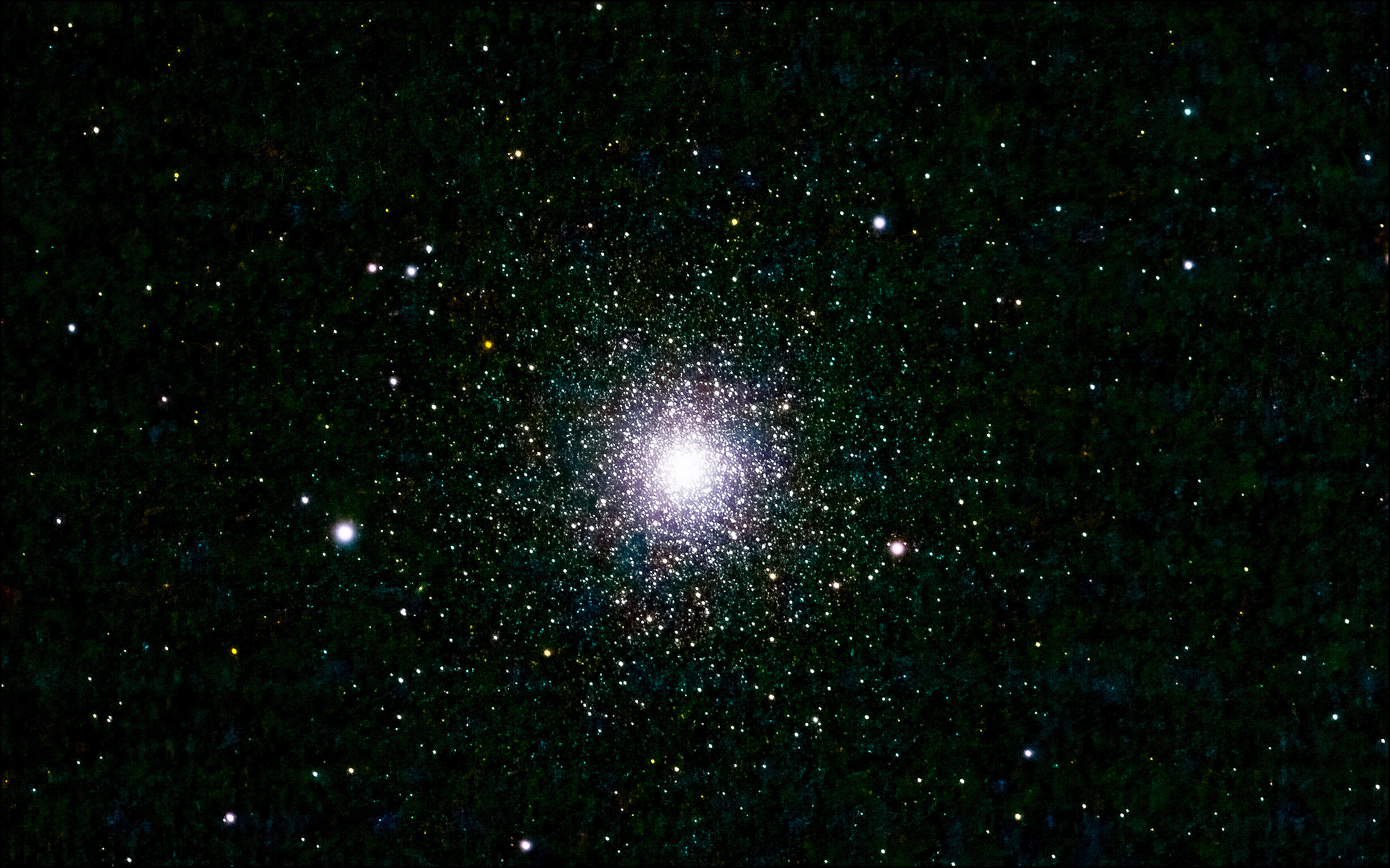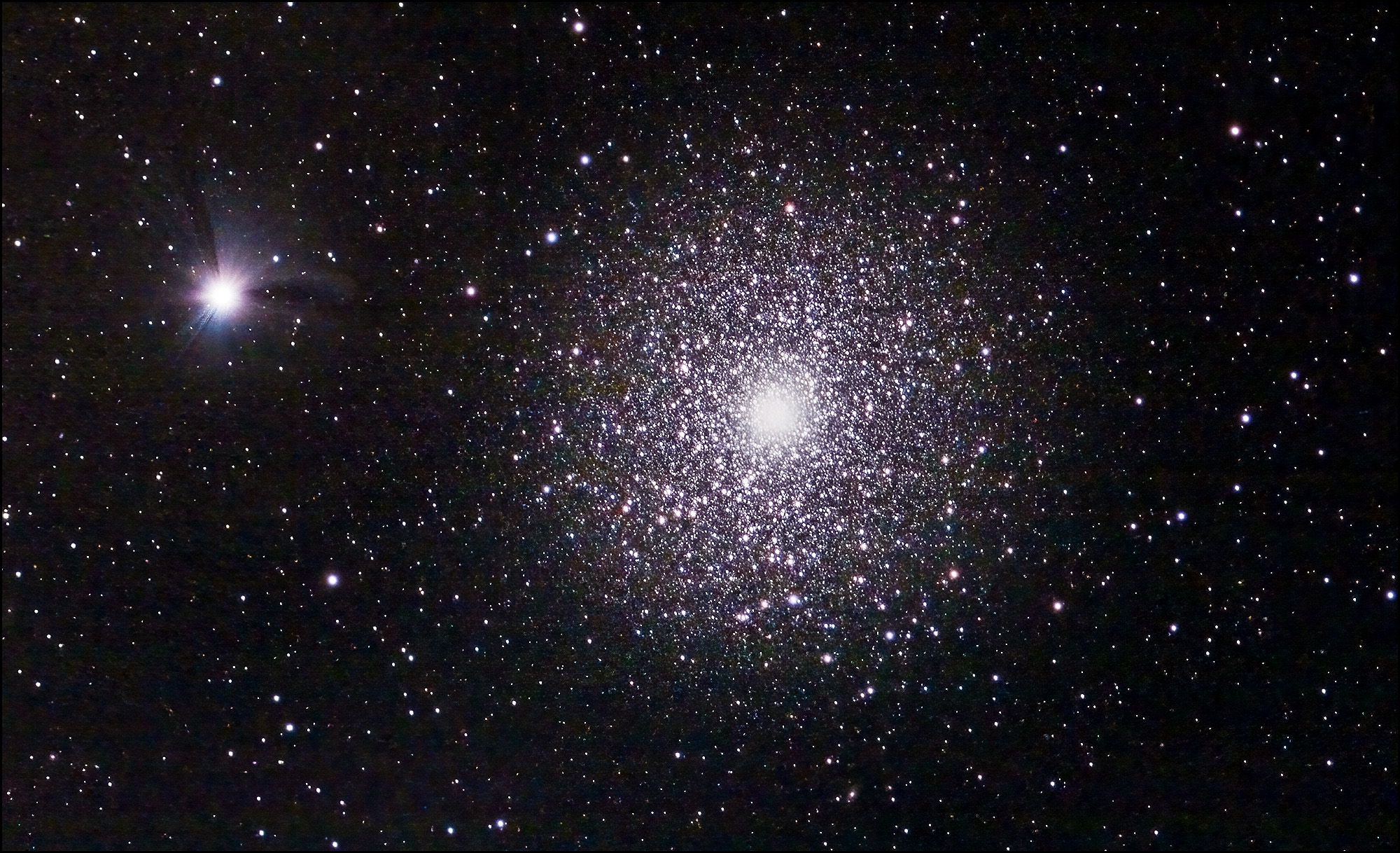Last month I took a picture of a globular cluster catalogued as M5. I wasn't able to do a great job with it, however, and thought I'd give it another try sometime. A week ago I was out in the desert again, but M5 was too low in the sky to image properly. Pretty much everything else was also below the horizon.
But there was one thing that wasn't: M3, a different globular cluster near the Big Dipper. So that's what I imaged. I cut my exposure time to 30 seconds and ended up with 672 usable frames over six hours.
So did this improve things? It did not. The final image was no better than the image of M5, and in the end I only used about a hundred frames. I did get a little bit more color than I did with M5, but that might be only because M3 is inherently more colorful.
I suspect there's only so much you can do with a globular cluster. They're stars, so they're bright and just don't need a lot of exposure time. I may do another one in the future, but probably not. I still find them kind of boring.



I find globulars pretty -- they're jewel-like. The clusters are billions of years old and so are dominated by old stars. Thus, the trend is toward yellowish and reddish, but there is a lot of subtle variation. You can bring that out in processing.
Still like them! Your sky shots are my faves.
After Charlie, you mean
Blink twice if your cat is holding you hostage.
That murderer? Well he is cute.
Imagine living on a planet in a globular cluster! Would the night sky be bright with starlight?
Planets are extremely rare in globular clusters, because the stars are so close together that planetary orbits get totally disrupted by nearby passing stars.
Great job Kevin. I love looking at bright shiny things.
It seems like that nebula to the left of M5 is a promising target.
Astronomer here. Those are good pictures! I've worked on both of those clusters.